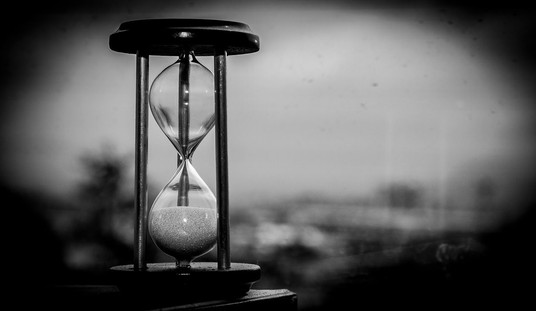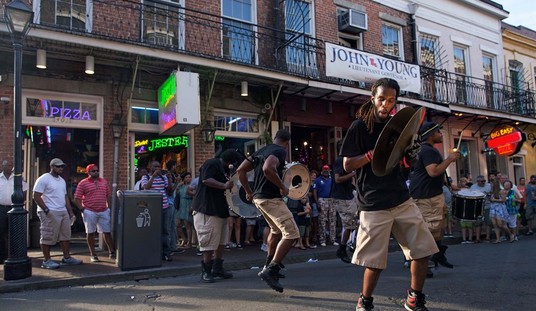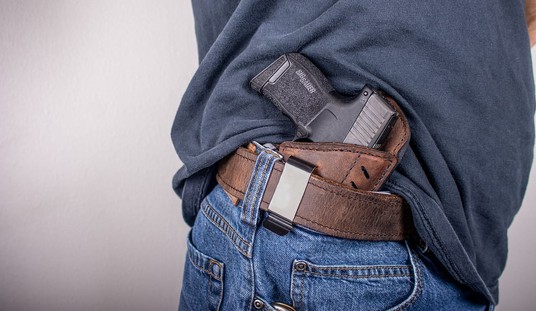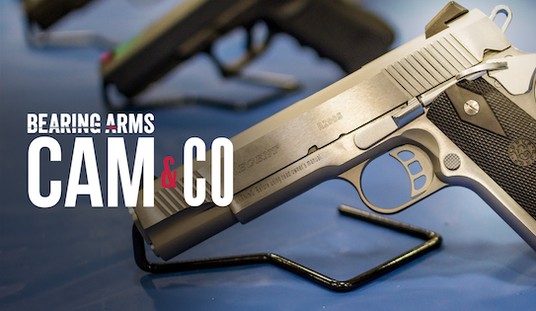On February 27, 2014, Bearing Arms Editor Bob Owens wrote an article asking one of the more relevant questions extant: “Does the NYPD Have A Training Problem?” Bob’s article tells the story of two rookie NYPD officers who, pursuing a pair of fleeing criminals, fired a total of seven shots and entirely missed the criminal that had turned and fired at them. Unfortunately, the criminal’s marksmanship was far superior and he, firing three rounds, hit one of the officers with all three, once in each leg and once in the groin. The officer is recovering. The NYPD is not publicizing what, if anything, the officers did hit, but this time, they apparently did not shoot any innocent bystanders. That has not been the case of late.
August 21, 2012: Chasing a man who had only moments before shot and killed someone, two police officers caught up to the man who turned and pointed a handgun at them. They fired a total of sixteen rounds and did hit and stop the killer, but in the process, managed to shoot and wound nine bystanders. I wrote a three part series at the time. In the first article, a link to actual security camera footage of the shooting is available. The two follow up articles are available here and here.
September 28, 2013: Two NYPD officers dealing with an emotionally disturbed man thought he was pulling a gun out of his pocket–he wasn’t–and fired three rounds at him from close range, all of which missed. Instead, they shot two bystanders, one of whom was using a walker. Of course, they shot her in the leg. My contemporaneous article on that incident is available here.
December 08, 2013: I published a follow up article wherein I reported that NYC authorities charged the man they missed with assault because they shot two innocent women trying to shoot him.
The invaluable Mark Steyn commented:
Ah, yes: the ‘situation’ injured the innocent bystanders. If you outlaw guns, only situations will have guns.
The defendant is looking at 25 years in jail for the crime of provoking law enforcement into shooting random citizens. If this flies in New York, then there is no law.
Bob is right. The NYPD definitely has a training problem, but the problem runs much more deeply. In fact, this is an abject lesson in the damage socialism causes, specifically, when socialist do-gooders try to help people, they virtually always cause enormous harm. We begin with the firearms NYPD officers are forced to carry:

This is the Smith and Wesson model 5946. A 9mm handgun, it is one of the older weapons in the Smith and Wesson catalog. It is a double action only pistol.

This is the Sig Sauer P226. This photo shows a standard double action Sig. The NYPD version has a bobbed hammer, and cannot be fired single action. Like the Smith, it too is a double action only gun.

This is the most modern handgun in the NYPD inventory, the Glock 17. It has the unique Glock “safe action” mechanism, and is most likely the best of the three options, but it too is seriously handicapped and is actually dangerous.
Why is it dangerous? Because the NYPD mandates 12 pound triggers.
This renders the Glock, which has a standard 5.5 pound trigger with a relatively short trigger pull, far more difficult to shoot with any degree of accuracy. The Sig and Smith are even more difficult to shoot well with 12 pound triggers. All three are chambered in 9mm. Most police agencies that issue Glocks specify the standard trigger, which, considering the excellent safety record of police-issued Glocks, is entirely reasonable.
Double action semiautomatic pistols were developed in large part to capture the lucrative police market. In the 70s, most American police agencies carried double action revolvers, whose heavy, rough and long trigger pulls–easily in the 12 pound range–produced predictably poor results. Officers involve in shootings commonly managed to hit their targets, even at inside-a-phone-booth ranges, no more than 25% of the time.
This was also true, and is true today, because most police officers are not gun guys and girls. Many officers shoot their issued handguns only when necessary for qualifications–commonly only once a year–and clean their weapons far less often. Many police officers don’t own personal weapons, and many don’t carry any handgun off duty. Skill with handguns, and particularly revolvers requires constant and serious practice. Most police officers aren’t willing to do that.
Police executives were scared to death of the pistols available in the 70s, which were primarily the Colt 1911 and Browning Hi-Power, both single action pistols correctly carried “cocked and locked.” The sight of those cocked hammers sent shivers up their spine and made their knees weak, so manufacturers developed double action mechanisms so that they functioned more or less like revolvers, except they didn’t. After the first, vague, long and heavy double action trigger pull, the second and subsequent shots have a short, light pull, generally making the impact points of at least the first two shots far apart indeed.
Col. Jeff Cooper called double action pistols “an ingenious solution to a non-existent problem.” And so they were. Police agencies transitioning to them found that they produced their own handling and accuracy problems, though qualification scores and actual shooting results did tend to improve.
With the introduction of Glocks, police agencies found weapons that were not only easy to shoot well, but that significantly increased qualification scores and actual hit percentages. In my own police experience, officers transitioning from the S&W Model 686 .357 Magnum to the Glock 22 in .40 S&W were amazed. Officers that could barely qualify in two or three tries with their revolvers, even with generous passing scores, could easily pass with the Glocks. Excellent shooters found the Glocks very easy to shoot well. They had to work only a fraction as hard to achieve excellent results with the Glock than they did with their revolvers. But that was Glocks with 5.5 pound standard triggers.
And so we return to the NYPD, a department long subject to the political whims of politicians. Even Republican mayors have hardly been ardent Second Amendment supporters. Generally, New York politicians distrust and dislike the police, gun owners, and guns. Police executives are virtually always people chosen more for their willingness to play ball politically than for their experience. A great deal of knowledge about firearms and tactics is not a matter of concern for those that hire them.
And so NYPD officers work for people who not only know little about firearms, but may actively hate them and distrust their own officers. Thus, they mandate 12- pound triggers on their theory the guns will be safer because they are so hard to shoot. This, to their way of thinking, will reduce the number of accidental discharges. As I note in the second article of the three part series, even the NYPD admits that the 12-pound triggers reduce accuracy, but they mandate them all the same even though they cause officers to miss suspects and perforate the innocent.
The triggers are a major factor, but are not entirely to blame. The NYPD apparently does not teach the Weaver stance, or at least, does not train in it to any standard of proficiency. Its internal documents admit that only about half of officers involved in shootings fired with any kind of two-handed grip. As late as 1992, overall officer hit potential was only 17%, and only 28% at 3 yards–9 feet–and closer.
Remember that in New York City, the Second Amendment is still not recognized by the government. Only the wealthy, famous and politically connected are allowed to carry concealed weapons. Unfortunately, not only are the police highly unlikely to be able to protect any individual, they have no legal duty to do so. In fact, considering their equipment and obviously minimal training, they’re as likely to shoot innocent bystanders as criminals.
New Yorkers should understand:
(1) Most police officers are not gun guys and girls. They own few, if any firearms, and seldom, if ever, practice. A great many citizens are far better shooters and tacticians.
(2) Most police officers fire their handguns only once a year for mandatory qualifications. Most clean their handguns less often.
(3) Most qualification courses of fire have generous passing scores, involve only stationary targets at known–and short–ranges, and officers are allowed to shoot as many times as necessary to pass. Many have to shoot many times. Twelve-pound triggers remove any advantage officers might derive from semiautomatic pistols.
(4) Many law enforcement agencies use only cheaper practice ammunition for qualifications. It produces much less muzzle flash, recoil and report than duty ammunition. As a result, many officers have fired their duty guns with duty ammunition only once or twice. When they have to fire their guns under stress, the recoil, muzzle-flash and report shock them, contributing to terrible accuracy.
(5) New York City political forces are generally virulently anti-gun, with all of the destructive baggage that crippling viewpoint carries.
(6) Mandating 12-pound double action only triggers, means that handguns have long, very heavy trigger pulls that make accuracy difficult at best, even for experts. Glocks available to the public have standard 5.5-pound triggers.
Bob is right. The NYPD does indeed have a training problem, but it’s only one element of a philosophical/political problem that extends into every facet of life in the Big Apple. Mandatory 12-pound triggers prove that the NYPD does not trust its officers with handguns, and is determined not to adequately train them. A very heavy trigger is a foolish measure intended to prevent accidental discharges, but has the unintended consequence of ensuring bad marksmanship, which inevitably produces accidental shootings of innocents.
Mike’s Home blog is Stately McDaniel Manor.
Image Credit: WNYC News








Join the conversation as a VIP Member